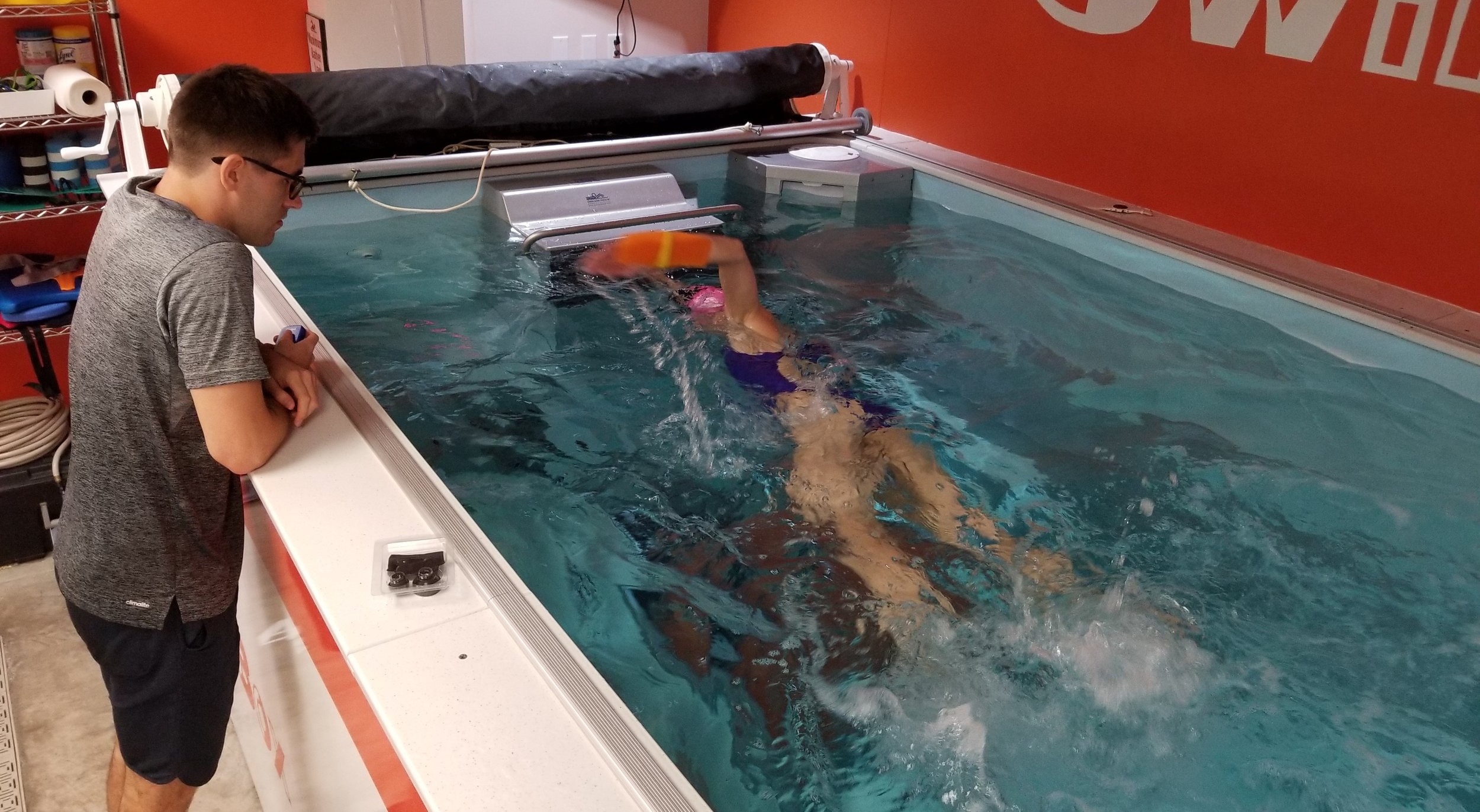Before you read any more of today's blog, I want to let you know I'm 100% aware of how repetitive my posts about Katie's and Flaca's lessons are. And that's exactly how working on swimming should be, repetitive. As I've said before, swimming is a sport of centimeters, and every 100th of a second counts. So working on the minute details of your stroke and constantly reinforcing proper technique is exactly how you're going to make positive progress and help yourself to swim more efficiently. Yes, it can be boring at times, but you're always working at moving forwards. Especially with people who have been swimming for years and are set in their ways, changes take time.
But anywayyyy, I wanted to start off my post about Katie's latest lesson with that little bit of background information so you don't think I'm just writing the same thing over and over again with different pictures. One thing Dan noticed during her recent lessons was that Katie's elbow was moving upwards as a result of her arm exiting the water too early. You want your elbow to stay on the same plane as your torso, not move higher or lower than that.
In case you missed last week's post, Katie's lesson focused on connecting the movement of the finish of her stroke into the recovery. You want to keep your palm facing backwards and make a "J" shaped movement from the finish of your stroke into your recovery in order to fully benefit from the propulsion you get from your catch and pull.
After working on this movement again Dan had Katie focus on the paddle you want to make from your fingertips to your elbow during the catch and pull of your stroke. In order to gain the maximum amount of propulsion from this paddle you want to make sure you're bending at your elbow, not your wrist. To ensure this Dan fashioned together a splint of sorts to prevent Katie from bending at her wrist and losing out on the majority of her paddle.
The splint forces Katie to keep her arm straight from her fingertips to her elbow, which creates the largest paddle possible to propel her through the water. The larger the paddle, the more efficient your stroke will become, and the easier it will be to move forward faster. Using the splint gives Katie better body awareness as to what she's looking for when she removes it and swims on her own. Understanding the feeling you're looking for when making a change to your stroke is key to making the change properly and progressing more quickly.
In between her lessons here Katie's doing workouts on her Vasa Trainer SwimErg that she has at home to work on strengthening the main muscles we use for swimming as well as up her endurance. An example of one of her workouts is listed below.
Repeat each three times:
two minutes of good catch movement (do butterfly or freestyle catch; no watts needed, just focus on proper movement)
two minutes freestyle catch at 20-40 watts (make sure you focus on keeping a good catch movement - keeping proper movement is key, especially when picking up the pace)
:15 seconds of freestyle catch at 100+ watts x 6; :30 seconds rest in between each round
Being able to focus on strengthening these movements outside of the pool is such an important piece to training and progressing in your times. The more endurance you gain on the SwimErg the more efficiently you'll be able to move through the water when you hop back in the pool. It's also a great tool to use when you're trying to find proper body awareness.
Stay tuned to see how Flaca's lesson goes this week!









